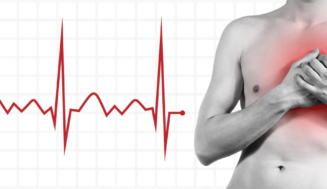The Power of Regular Cardiorespiratory Exercise over Hypertension

Hypertension, or high blood pressure, is a common health condition that affects millions of people worldwide. It is often called the “silent killer” because it usually has no noticeable symptoms, but it can lead to serious cardiovascular problems if left untreated.
Cardiorespiratory exercise (CE), also known as aerobic exercise, is any activity that increases the heart rate and engages large muscle groups, such as running, swimming, cycling, or brisk walking. Regular CE has many benefits for the body, and one of the most notable is the effect on hypertension.
Why Cardiorespiratory Exercises Are Good for Hypertension
Here are some ways in which regular cardiorespiratory exercise can have a positive effect on hypertension:
- Reducing blood pressure: Regular workout invariably reduces both systolic and diastolic blood pressure. It helps strengthen the heart muscles, making them more efficient in pumping blood throughout the body;
- Improving endothelial function: The endothelium is the inner lining of blood vessels, and its dysfunction is a key factor in the development and progression of hypertension. Regular CE improves endothelial function by increasing the production of nitric oxide, a chemical that helps dilate blood vessels and improve flow;
- Weight control: Obesity and overweight are significant risk factors for hypertension. Regular CE plays a vital role in weight management and can help with weight loss or maintenance. Engaging in such a workout burns calories, promotes fat loss, and helps maintain healthy body weight. As you lose weight, your blood pressure decreases as well, reducing your risk of developing hypertension;
- Stress reduction: Chronic stress can contribute to the development and exacerbation of hypertension. Regular cardiorespiratory exercise has been proven to reduce stress levels by promoting the release of endorphins, often called feel-good hormones. These endorphins help improve mood, reduce anxiety, and provide an overall sense of well-being. By managing stress levels, people can experience positive effects on blood pressure regulation;
- Reducing peripheral resistance: Peripheral resistance is the resistance encountered by blood flow in small arteries and arterioles. Regular CE helps improve the elasticity and function of these small vessels by reducing peripheral resistance. As a result, the heart doesn’t have to work as hard to pump blood, resulting in lower blood pressure;
- Reduced sympathetic nervous system activity: The sympathetic nervous system plays a role in regulating blood pressure by controlling the constriction and relaxation of blood vessels. People with hypertension often have increased sympathetic nervous system activity, which can contribute to higher blood pressure levels. Regular cardiorespiratory exercise has been shown to reduce sympathetic nervous system activity, resulting in lower blood pressure and improved cardiovascular health.
It is important to note that although regular cardiorespiratory exercise can have a significant positive effect on hypertension, it should be approached with caution. Individuals with hypertension should consult with their physician before beginning an exercise program to ensure safety and receive individualized recommendations based on their specific condition.
Conclusion
In conclusion, regular cardiorespiratory exercise can have a significant impact on the treatment of hypertension. By engaging in aerobic exercise, people can achieve lower blood pressure, improve endothelial function, reduce weight, reduce stress, and decrease peripheral resistance and sympathetic nervous system activity. Incorporating regular exercise into one’s lifestyle, along with proper medical care, can be a powerful approach to controlling hypertension and improving overall cardiovascular health.








